How to identify a quality lab grown diamond ring?
Key takeaway:
- Lab grown diamonds are created through a process that replicates the natural diamond formation, resulting in a more sustainable and affordable option.
- When identifying a quality lab grown diamond ring, it is important to consider the 4C’s: carat weight, cut, color, and clarity.
- To ensure the quality of a lab grown diamond ring, look for specific characteristics such as a certification from a reputable lab, proper grading, and a reputable retailer or online platform.
Keytakeaways:
1. Lab grown diamonds offer a sustainable and cost-effective alternative to natural diamonds.
2. When determining the quality of a lab grown diamond ring, consider the 4C’s: carat weight, cut, color, and clarity.
3. To ensure the quality of a lab grown diamond ring, look for characteristics like certification from a reputable lab and purchase from trusted retailers or online platforms.
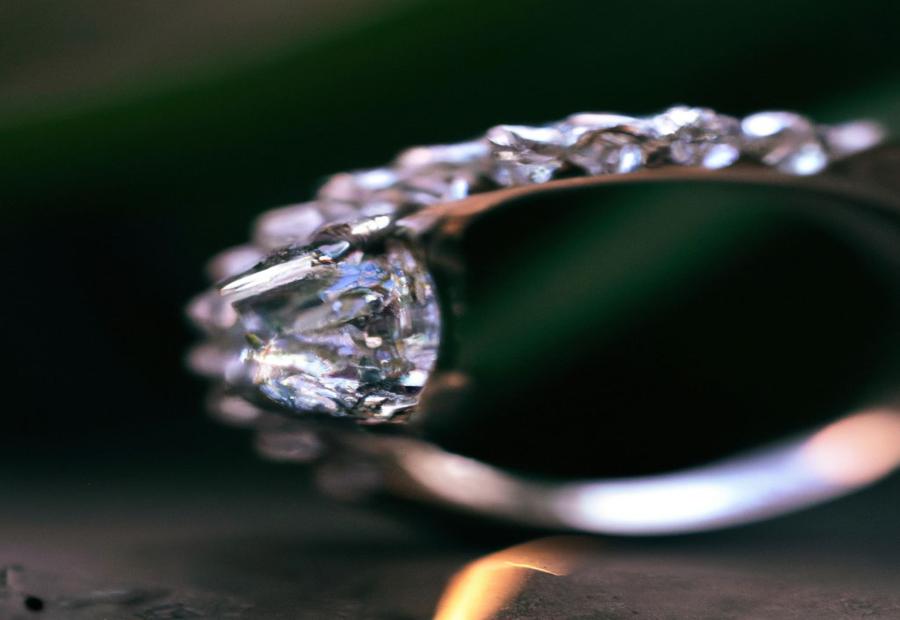
Photo Credits: Www.Lab-Grown-Diamond-Ring.Com by Bradley Jackson
Lab grown diamonds have gained significant prominence in the jewelry industry, leading to an increased demand for quality lab grown diamond rings. In this article, we will explore the definition and significance of lab grown diamonds, shedding light on their growing popularity. With the purpose of this article in mind, we aim to provide valuable insights and guidance to help you identify a top-notch lab grown diamond ring that meets your standards of quality and excellence.
Definition and significance of lab grown diamonds
Lab-grown diamonds are created in a lab using tech processes. They have the same chemical makeup, crystal structure and properties as natural diamonds. They’re made by recreating conditions like those found in Earth’s mantle where real diamonds form over millions of years. Lab-grown diamonds offer an ethical and sustainable alternative to mined diamonds. They eliminate the impacts of diamond mining, like deforestation, pollution and human rights issues.
There are two methods for creating lab-grown diamonds. High Pressure High Temperature (HPHT) and Chemical Vapor Deposition (CVD). In HPHT, a diamond seed is put in a pressurized chamber and exposed to extreme heat and pressure. This allows carbon atoms to form a crystal lattice around the seed. CVD involves adding controlled amounts of carbon gas into a low-pressure chamber, creating a thin diamond layer on a substrate. Both methods require advanced tech and expert knowledge to make high-quality diamonds.
Lab-grown diamonds have the same physical characteristics as natural diamonds. But, they can be distinguished by certain features like growth patterns or inclusions. Plus, lab-grown diamonds are cheaper and have a guaranteed origin.
When buying a quality lab-grown diamond ring, you should look at its optical properties, craftsmanship, setting quality, metal choice, etc. Trusted retailers and online sites offer lab-grown diamond rings for purchase. Consider certifications, return policies, warranties and customer reviews before making a purchase. There are more retailers stocking lab-grown diamonds, so consumers have more options.
If you lost your finger, it’s the perfect time to get a lab-grown diamond ring!
Purpose of the article
This article is about lab-grown diamond rings. They are becoming popular in the jewelry industry. It aims to educate readers about them. We will look at how they are made and compare them to natural diamonds. This will help readers decide when buying a lab-grown diamond ring.
Lab-grown diamonds are created by replicating natural diamond formation. This includes intense heat and pressure in a controlled laboratory setting. Thus, lab-grown diamonds have the same physical and chemical properties as natural ones.
Comparing lab-grown to natural diamonds, it’s clear they’re similar in appearance and gemological characteristics. Both can show great clarity, color, cut, and carat weight. However, lab-grown diamonds differ in origin and cost.
To identify a quality lab-grown diamond ring, consider the 4C’s – clarity, color, cut, and carat weight. These will show the quality and value. Also, look at fluorescence and symmetry.
When buying a quality lab-grown diamond ring, choose trusted retailers and online platforms. Look for certificates of authenticity. Consider price comparison, customer reviews, and return policies.
What is a lab grown diamond?
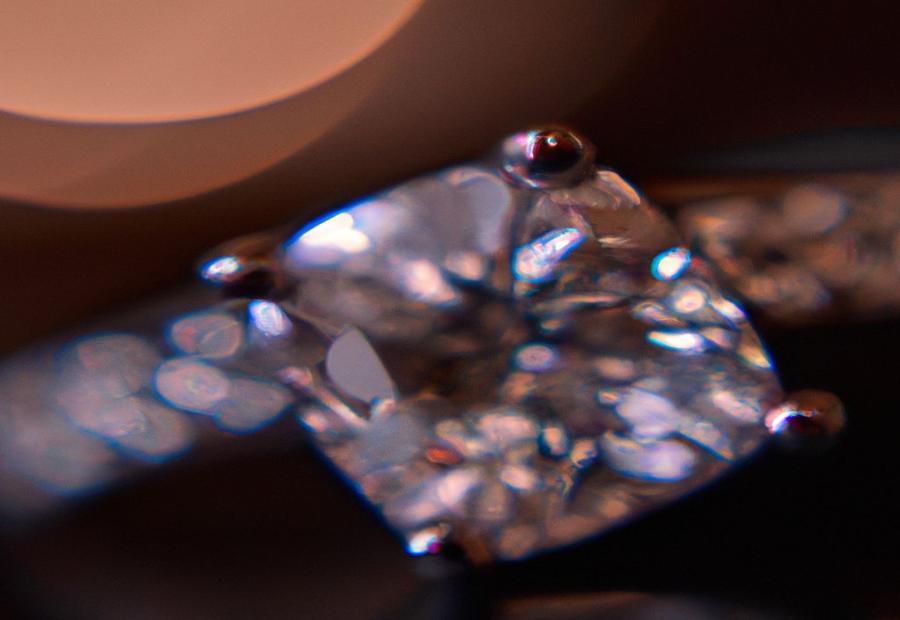
Photo Credits: Www.Lab-Grown-Diamond-Ring.Com by Patrick Nelson
Lab grown diamonds are a fascinating alternative to natural diamonds, offering unique benefits and sustainability. In this section, we’ll explore what exactly constitutes a lab grown diamond, diving into the process of their creation and highlighting the key differences when compared to natural diamonds. We’ll delve into the science and technology behind these dazzling gems, providing insights into their increasing popularity and changing perceptions within the jewelry industry.
Explanation of the process of creating lab grown diamonds
Lab grown diamonds are made using a process that replicates natural diamond formation. This results in gemstones with the same chemical and physical properties. Carbon atoms are placed in a crystal lattice structure under high pressure and temperature conditions. This is done by either the HPHT method or CVD method.
The HPHT method involves placing a carbon seed and graphite powder in a chamber. The chamber is then subjected to extreme pressure and temperature. This causes the carbon atoms to bond together and form a diamond crystal. The CVD method uses a diamond seed in a chamber with hydrocarbon gases. These gases are ionized to create plasma. Carbon atoms separate from the gas and accumulate on the diamond seed, forming a larger diamond.
Lab grown diamonds have the same characteristics as natural diamonds. These include chemical composition, hardness, brilliance, transparency, and durability. It’s easier to control color and clarity when making lab grown diamonds, giving customers more options.
Lab grown diamonds are better for the environment. They don’t cause deforestation, soil erosion, water pollution, or worker exploitation. Plus, they don’t contribute to blood diamonds or conflict diamonds.
In conclusion, individuals can purchase lab grown diamonds as an ethical alternative to mined diamonds. They still have all the properties of natural stones and are created using a mix of science and sparkle.
Comparison of lab grown diamonds with natural diamonds
Lab grown diamonds can be compared to natural ones in terms of various factors. It can be hard to find the perfect lab grown diamond ring. That’s why it’s important to compare the two. It’s like searching for a needle in a sparkling, ethically-sourced haystack!
How to identify a quality lab grown diamond ring
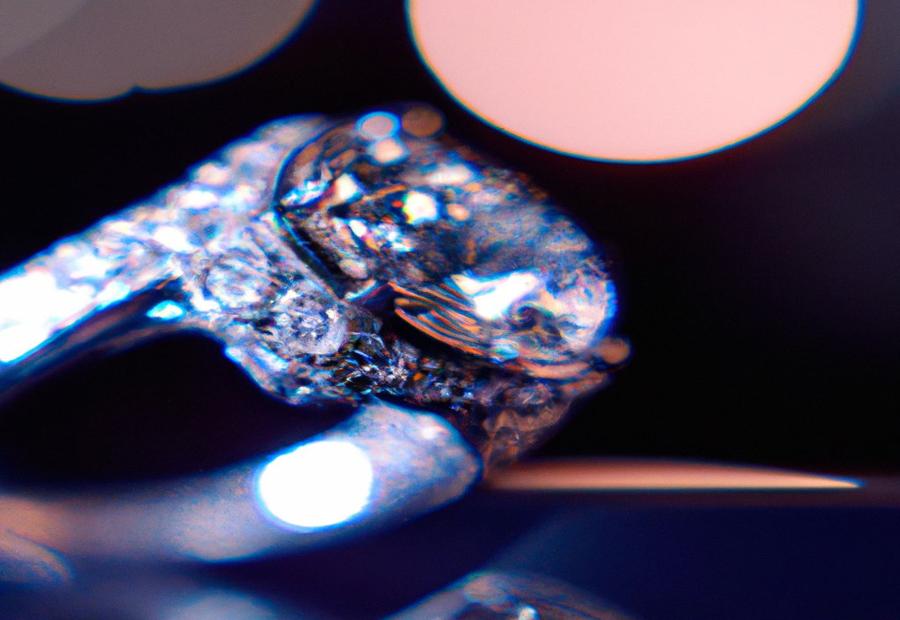
Photo Credits: Www.Lab-Grown-Diamond-Ring.Com by Justin Clark
Lab grown diamonds have gained popularity for their ethical and sustainable nature, but how can one identify a quality lab grown diamond ring? In this section, we will explore key aspects that will help you distinguish a high-quality lab grown diamond ring from the rest. From understanding the importance of the 4Cs (carat, cut, color, and clarity) to specific characteristics that signify top-notch craftsmanship, we will equip you with the knowledge to make informed decisions when it comes to lab grown diamonds.
Importance of the 4C’s
The 4C’s – Cut, Color, Clarity, and Carat Weight – are essential for judging the quality and worth of a lab grown diamond ring. These aspects are the standard when evaluating both natural and manufactured diamonds.
Cut tells how the diamond has been shaped and cut, influencing its sparkle and shine. Its Color refers to any tinges or shades. Clarity is the presence of any internal or external imperfections. Lastly, Carat Weight is the size and mass of the diamond.
Comprehending the 4C’s is essential when purchasing a lab grown diamond ring. Man-made diamonds are crafted using advanced technology that imitates the natural formation of diamonds. But, unlike natural diamonds which have one-of-a-kind traits created by nature, lab grown diamonds can be tailored to meet certain criteria. That means each lab grown diamond has its own unique combination of the 4C’s.
Thinking about the 4C’s is vital to ensure you pick a stone that fits your needs and wants. Taking into account the Cut, to maximize brilliancy. Choosing a Color grade that pleases you. Examining Clarity, to make sure there are no flaws or blemishes. Lastly, Carat weight allows you to select a size that is within your budget.
By understanding the 4C’s, you can make an informed decision and confidently buy a top-notch lab grown diamond ring.
GIA, a widely respected gemological institution, states that the 4C’s are critical for assessing the quality and value of a diamond, such as lab grown diamonds (“Importance of the 4C’s,” n.d.). They provide dependable info for those wanting to grasp and assess the quality of lab grown diamonds based on the 4C’s.
Specific characteristics to look for in a quality lab grown diamond ring
Lab grown diamond rings have traits that help identify their quality. It is important to take these into account when considering a purchase to ensure the value of the ring. Factors to look out for include: cut, color, clarity, carat weight, certification, and overall appearance. All of these components should be evaluated together rather than individually. This will result in an extraordinary lab grown diamond ring that will be treasured for years. Searching for a lab grown diamond ring is like a treasure hunt – but with more glitter!
Where to buy a quality lab grown diamond ring

Photo Credits: Www.Lab-Grown-Diamond-Ring.Com by Eugene Jones
Finding a quality lab-grown diamond ring can be a daunting task, but in this section, we will guide you in the right direction. Discover trusted retailers and online platforms where you can make your purchase with confidence. Additionally, we will provide essential considerations to keep in mind during your search. Get ready to navigate the world of lab-grown diamonds and find the perfect ring for your loved one.
Trusted retailers and online platforms
Trusted retailers and online platforms are the best places to buy a lab grown diamond ring. They have a wide variety of styles, cuts, and carat weights, giving customers lots of options. These sellers and platforms go the extra mile to source their diamonds ethically and with quality. This commitment to transparency provides customers assurance when making their purchase.
Customers can find info about each lab grown diamond on these trustworthy retailers and online platforms. They list details such as color, clarity, cut, and carat weight, so buyers can make an informed decision. Also, potential buyers can read customer reviews and ratings, which are helpful when making a choice.
These establishments have amazing customer service. During the purchase process, they assist with questions and address concerns. This helps customers have a great experience.
When looking for a quality lab grown diamond ring, choose reliable retailers and online platforms that prioritize transparency, ethical sourcing, and customer satisfaction. By selecting reputable stores, customers can feel secure in their purchase and be proud to own a stunning lab grown diamond ring. So, before buying, keep these things in mind and remember: it’s the rocks that count, not the gossip!
Considerations when purchasing a lab grown diamond ring
When buying a lab grown diamond ring, take the time to consider essential factors. These include:
- Origin and certification
- Clarity and color
- Cut and carat weight
- Setting and metal choices
- Warranty and return policy
Also, research retailers and online platforms to find the perfect piece. Lab grown diamond rings provide an ethical and sustainable alternative!
Conclusion
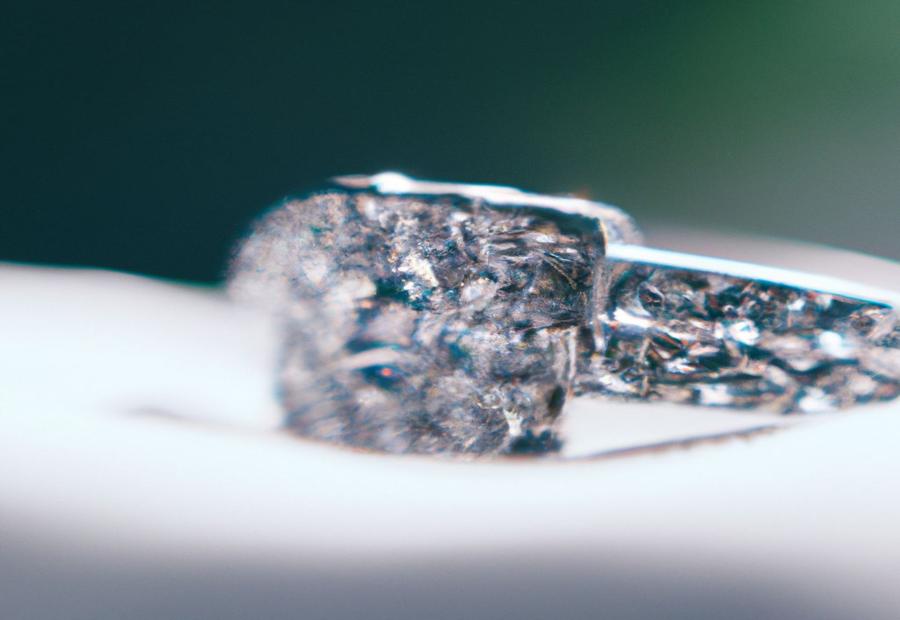
Photo Credits: Www.Lab-Grown-Diamond-Ring.Com by Mark Anderson
In conclusion, let’s recap the incredible benefits of opting for lab grown diamond rings and discover the final recommendations and closing thoughts. We’ll take a closer look at the advantages these diamonds offer, backed by reliable sources, and offer valuable insights and guidance to help you make an informed decision.
Recap of the benefits of lab grown diamond rings
Lab grown diamond rings come with lots of perks. For example, they are eco-friendly as they’re made in a controlled lab environment, rather than mined. Plus, they’re cheaper than natural diamonds. Their physical and chemical properties are the same as natural diamonds, so they are just as good quality and durable. Finally, lab grown diamonds don’t have any conflict concerns, as they’re not mined in unethical places.
When buying a lab grown diamond ring, look at the 4C’s: carat weight, color grade, clarity grade and cut grade. This will affect the overall value and appearance. Also, check the craftsmanship of the ring, to make sure it is well-made and can handle everyday wear.
One customer was initially hesitant but went for it due to the cost and ethical aspects. They were happily surprised by the quality of their diamond and the craftsmanship of their ring. They got lots of compliments and would definitely recommend it. This proves that lab grown diamond rings can be a positive and satisfying choice.
Final recommendations and closing thoughts
We’ve explored lab-grown diamonds and established their importance. We’ve also looked at the process of creating them and how the 4C’s (carat weight, color, clarity, and cut) can help us assess their quality.
Now, to identify a quality lab-grown diamond ring, we must pay attention to other characteristics too. These include fluorescence, symmetry, polish, and craftsmanship.
To purchase a top-quality lab-grown diamond ring, seek out reputable retailers and online platforms that specialize in these gems. Ensure stones are ethically sourced and certified. Also, consider return policies, warranties, and customer reviews when making your decision.
Finally, assess all aspects of a lab-grown diamond ring including the 4C’s, fluorescence, symmetry, polish, and craftsmanship. Choose trusted retailers and consider factors such as return policies, warranties, and customer reviews for a successful purchase.
Some Facts About How to Identify a Quality Lab Grown Diamond Ring:
- ✅ Laboratory-grown diamonds are chemically and optically identical to natural diamonds, making them difficult to differentiate using traditional gemological observations and instruments. (Source: Team Research)
- ✅ The Gemological Institute of America (GIA) utilizes advanced devices like the GIA iD100® and other instrumentation to accurately identify natural diamonds. (Source: Team Research)
- ✅ To determine whether a diamond is natural or laboratory-grown, it is recommended to send it to a gemological laboratory for examination and advanced testing. (Source: Team Research)
- ✅ Lab grown diamonds have a smaller ethical impact compared to earth mined diamonds, as they require less energy and resources to create. (Source: Team Research)
- ✅ Lab grown diamonds are often more affordable than natural diamonds, allowing buyers to choose a larger carat or higher quality diamond without exceeding their budget. (Source: Team Research)
FAQs about How To Identify A Quality Lab Grown Diamond Ring?
How can I definitively identify a quality lab-grown diamond ring?
Identifying a quality lab-grown diamond ring can be challenging, as lab-grown diamonds are chemically and optically identical to natural diamonds. Traditional gemological observations and instruments are unable to differentiate between the two. To definitively identify a lab-grown diamond, it is recommended to send it to a gemological laboratory for advanced testing and examination.
Are lab-grown diamonds cheaper compared to natural diamonds?
Yes, lab-grown diamonds are often more affordable than natural diamonds. Since they can be created on demand in a controlled environment, the production costs are lower. This allows lab-grown diamonds to have a lower price tag, giving buyers the opportunity to choose a larger carat or higher quality diamond without exceeding their budget.
What advantages do lab-grown diamonds have over natural diamonds?
Lab-grown diamonds offer several advantages. Firstly, they have a smaller ethical impact compared to earth-mined diamonds, as they require less energy and resources to create. This makes lab-grown diamonds a more sustainable and guilt-free option for conscious-shoppers. Additionally, lab-grown diamonds often have better quality and higher purity due to the controlled conditions in which they are created. They also come in different colors that are rarely found in natural diamonds.
How can I tell the difference between a lab-grown diamond and a natural diamond?
To tell the difference between a lab-grown diamond and a natural diamond, a microscope is required, as natural diamonds contain small amounts of nitrogen. Lab-grown diamonds do not have visible differences to the naked eye and cannot be identified solely based on their appearance. Therefore, it is recommended to rely on advanced testing and examination conducted by a gemological laboratory.
What are some diamond imitations that I should be aware of?
When considering diamond purchases, it’s important to be aware of diamond imitations such as cubic zirconia and moissanite. These stones have different chemical compositions compared to lab-grown or natural diamonds. Lab-grown diamonds, on the other hand, are chemically identical to natural diamonds, making them a preferred choice for those seeking a genuine diamond alternative.
Can I trust the origin of a lab-grown diamond ring?
Yes, the origin of a lab-grown diamond cannot be determined by the naked eye. Lab-grown diamonds are created using a process called chemical vapor deposition, replicating the natural diamond formation. To ensure the authenticity and quality of a lab-grown diamond ring, it is recommended to purchase from a trusted retailer and inquire about the diamond’s certification and origin.

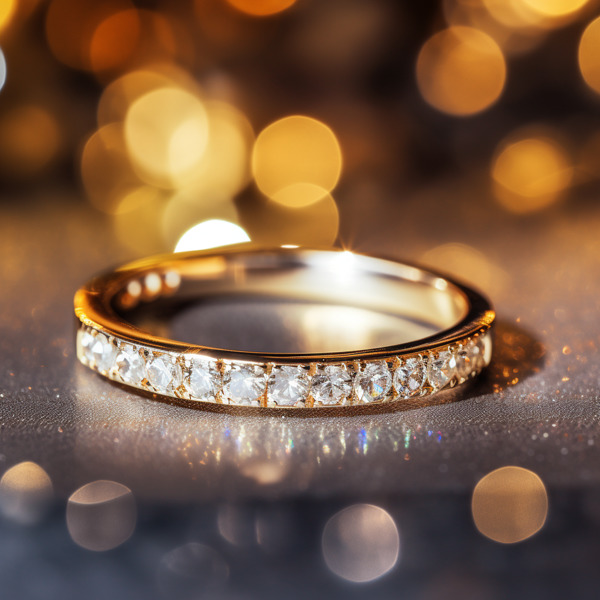
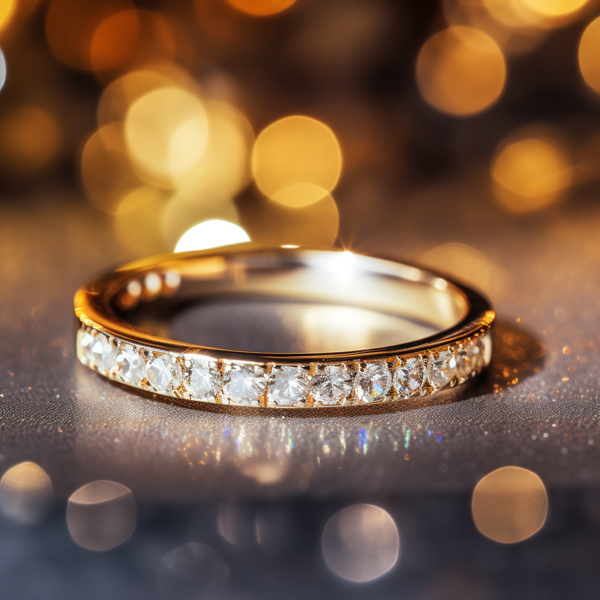
Leave a Reply